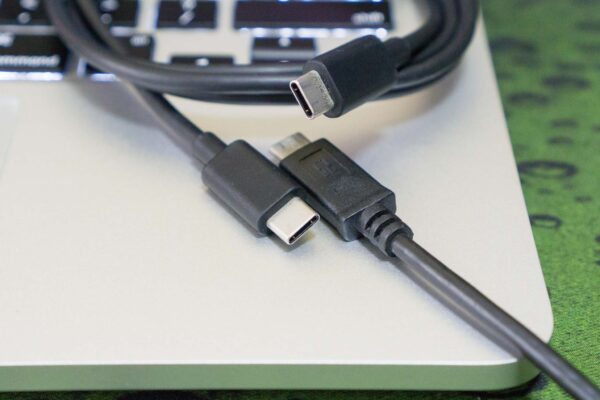Many years ago, I marvelled at the usefulness of MagSafe connectors. The break-away magnetic connection was very practical, but equally important was how it was standard across all of Apple’s Mac notebooks at that time and many years thereafter. I wished there could be a standard power connector across all notebooks, regardless of manufacturer.
It’s not farfetched. You see, the International Electrotechnical Commission (IEC) has a standard , IEC 60320, that defines appliance couplers. The C13/C14 coupler is probably very familiar — it’s used in your desktop PC power supply, as well as quite likely your TV, home theatre system, and the power adapter of most of your household electronics.
How nice it would be if I could just travel with my notebook anywhere, sans any accessories, cables and adapters, and be able to just use a ubiquitous power receptacle that is available everywhere. The IEC 60320 is concerned with AC power, and what I need is a standard for DC. There sort of is something… you know, that 12V DC adapter. It’s unfortunately too clunky to be used in a notebook.
The MagSafe connector was great. Then Apple junked it when they upgraded to a slightly smaller MagSafe 2. Last year, unfortunately, they again junked it with their new MacBook notebooks to use an even smaller USB Type-C connector.
Well, cool, maybe USB Type-C (also referred to as USB-C) can help standardise things for all of us. It’s every better, really, because now we’re not talking about just power delivery, we’re also talking about a standardised port for data connections. Hey, USB did stand for the Universal Serial Bus, and while USB wasn’t good enough for many applications in the past, it looks like USB Type-C is here to save us.
Sadly, that’s mostly wishful thinking.
I wrote a post previously about how USB Type-C didn’t make things easier. You should read that, if you haven’t, because I’m going to skip most things I’ve already said before. There’s still a point with this post, because there’s actually more to say about this mess with USB Type-C.
Have you heard about Thunderbolt 3? It’s the successor, of course, to Thunderbolt and Thunderbolt 2, both of which had physically used the Mini-DisplayPort physical connector. Well, you know what, Thunderbolt 3 is now using USB Type-C connectors.
Does that mean USB Type-C is the same as Thunderbolt 3? No. Not at all. It’s just a physical connector.
Does that mean you can pick up any USB Type-C cable, or more accurately, any cable with USB Type-C connectors on both ends, and use it to connect between Thunderbolt 3 devices? No.
Can you pick up any USB Type-C cable, and use them to charge your shiny new 2016 MacBook Pro? No. You better not try, actually.
Just look at the cables sold by Apple and you know things are truly complicated.
- USB-C Charge Cable (2m) sells for S$28.
- Belkin Thunderbolt 3 cable (2m) sells for S$78.
(These are the discounted prices until end of the year because, well, Apple caved in to complaints that the new MacBook Pros only had USB Type-C ports.)
To be clear, both the above cables have USB Type-C connectors at both ends of their 2m long cables. Sure, one is white, and the other is black, but surely that won’t explain the S$60 difference in price. The reason for the pricier Belkin cable is that it supports a Thunderbolt 3 connection up to 40Gbps, while the cheaper one, intended mainly for charging, carries only a USB 2.0 connection. Interestingly, while the cheaper one can be used to deliver 87W of power for 15-inch MacBook Pros, the more expensive one which you’d assume should be at least as good, in fact, is advertised only to deliver 60W of power.
Why has it become so complicated?
With USB-C cables, you cannot just go out and buy the cheap, $2, variety of cables and expect them to behave as any other cable should. Indeed, you cannot even blame the cables, because clearly, the USB-C ports on devices themselves are going to be complicated.
The Nexus 6P’s USB-C port, for example, carries only USB 2.0 connection, not USB 3.0 or 3.1, or as explained in my other post, are actually USB 3.1 gen 1 and USB 3.1 gen 2 respectively. The Google Pixel and Pixel XL smartphones, however, have a USB-C port that support USB 3.0 (or rightfully 3.1 gen 1).
While USB-C to HDMI dongles work with some devices like the 12-inch MacBooks, they don’t on the Nexus 5X, Nexus 6P, and supposedly the Pixel and Pixel XL.
See, USB is officially universally complicated. They have now invented a connector which, even when a plug fits into the port, is pretty much meaningless.

